Welcome to the NHK: Collection Part Two
Introduction
It seems our lives today revolve around waiting. We wait for the train, we wait for our lunch breaks, we wait in doctor's surgeries, we wait to get into buildings, we wait to get out, and we wait for movies and DVDs. It's just so refreshing to not have to get in line for once, to not watch the weeks pass on a calendar. Last December, Funimation released Welcome to the NHK Collection Part 1, which I love and caress and fondle and have raved about in the review on this site. Funimation then released the second half of the series on the same day. I love it when that happens. Of course then I had to wait for the postman to turn up, and you have to spare a thought for those loyal ADV customers who were collecting the singles only for ADV to go kaput, leaving them in the lurch, and with a six-month wait for the final volume to be released by Funimation. You'd be forgiven for thinking it was a conspiracy.
Conspiracy lies at the heart of Welcome to the NHK, although it may all be in the mind of protagonist Tatsuhiro Sato. Sato is a NEET, he's not in employment, education or training, and hasn't been since he dropped out of college four years previously. In addition to that, he's a hikikomori, suffering from acute social withdrawal. He's basically locked himself away in his apartment, rarely venturing out, and shunning any human contact whatsoever. Fears of failure, rejection and ridicule dominate his life, and he's paranoid to the point of hallucinations, seeing conspiracies against him at every corner. In fact, he attributes his isolated state to the NHK, the Nihon Hikikomori Kyokai, an organisation that through an endless diet of anime, manga and merchandise wants to create a legion of self-loathing otaku in the world. The only human contact Sato has is with his next-door neighbour, even if it is just through a thin separating wall. All day and every day, the same anime theme blares from a stereo, and Sato nurses illusions of going round in righteous fury to confront him, only to chicken out as soon as he gets to his front door. Then one day, there's a knock on the door. Fearing an irate utilities bill collector, Sato opens it. It's his first meeting with a young girl named Misaki Nakahara, and it may be his one chance at a cure.
Funimation presents the final twelve episodes of Welcome to the NHK across two discs.
Disc 1
13. Welcome to Paradise!
When last we left Sato, he had left his hikikomori recluse life behind, and started afresh with Hitomi with a vacation in the sun the start of something new and positive. Except the presence of three other travellers wasn't quite expected. In fact it turns out that Sato has joined a suicide pact, and the isolated island chosen is the perfect place to say goodbye to the cruel world. The trouble is that weak-minded Sato has a hard time going against the flow, and in his desire to be accepted and not offend, he winds up climbing with the others to the top of a cliff. Meanwhile Hitomi's boyfriend has figured out what is going on, and with Misaki and Yamazaki, together they are racing to the rescue. The boat trip to the island finally gives Yamazaki a chance to confront Misaki about her meddling in his next-door neighbour's miserable life.
14. Welcome to Reality!
It's the aftermath, and following Misaki's unconventional talkdown technique, Sato is feeling understandably depressed and frustrated. When she tries to talk to him, he lashes out in anger, but is shocked to see her flinching, no actually cowering from him. Hitomi's boyfriend has arranged for the suicide club to return to shore and unwind at a hotel, before facing their worried families. One of the group, a young boy gives Sato an online RPG pass, telling him that there is hope for a hikikomori like him. Apparently you can earn a living playing online computer games and engaging in 'Real Money Trading'. It's good timing too, as when Sato returns home, his mother phones with some bad news. At least Misaki is willing to resume their counselling sessions.
15. Welcome to the Fantasy!
Sato's allowance has been halved! He hasn't even enough money to buy a CD, his dad has been fired and is currently experiencing his own hikikomori phase, and now Sato has to stand on his own two feet. He'll have to get a job! Then he remembers the online game that offers the chance to make real money. Sato has a month of free access to begin with, and maybe that will be enough time to master the game and start earning. Except that he keeps dying. In a game where you're supposed to gather a party of adventurers and work together, being an antisocial recluse is a disadvantage. That's until he meets the cute catgirl Mia. When Sato has missed a whole bunch of counselling sessions, Misaki gets worried, and decides to check on him. What she finds isn't pretty.
16. Welcome to Game Over!
Sato's worse than before. He's living in garbage, glued to a PC screen, and choosing the digital world over the real. He's going from strength to strength there as well, with the aid of the gorgeous Mia. He's gathered a party of adventurers, and despite a little dwarf of negativity, they are working their way forward through the levels. Even better, Sato is seriously falling for the catgirl. But the real world is about to come crashing in again. Mia, the catgirl knows where Sato lives, and she wants to meet him face to face. Meanwhile the pessimist dwarf, in real life lives with his sister, and that sister recognises Sato's name. Suddenly Sato gets a phone call from Megumi Kobayashi, who was the class rep in his high school. She has a golden opportunity for him.
17. Welcome to Happiness!
It's a golden opportunity indeed, as they catch up over coffee. Megumi is in Tokyo studying at college, having followed her older brother to the city. When Sato tells her of his hikikomori status, he's surprised to see she doesn't laugh or look down on him. Instead she offers to help. She'll introduce him to her mentor Sagawa, who has a foolproof path to self-improvement. Sato doesn't buy it at first, following a train ride to the middle of nowhere and a thirty-minute walk. The danger signs are all over the place when he sees the literature and the fellow devotees at the lecture, but Megumi's tears and her pleas to his hikikomori nature do the trick.
18. Welcome to No Future!
Sato is at the lowest tier of a pyramid scheme, with a whole lot of expensive detergent to shift. He needs to go up a level, which means finding some recruits. Enter Yamazaki and Misaki, who greet his sales pitch with scepticism. Sato realises that his life has suddenly gotten worse, something he previously considered impossible. While Yamazaki takes some time to berate him, Misaki is a little more constructive, going out to buy the manga guide to pyramid schemes. When she discovers something called a 'cooling off period' it seems like the escape route that he needs. But being a hikikomori, he needs help, he needs moral support, he needs Yamazaki and Misaki to go with him to see Megumi. Her house is like a shrine to the pyramid scheme, full of useless junk that she needs to sell. But she is legally obliged to allow Sato to cancel. As she's getting the form, they hear a loud knocking from upstairs.
Disc 2
19. Welcome to the Blue Bird!
They meet Megumi's brother, who is at this point the ultimate hikikomori. He was one of Sato's companions in the online RPG, and he practically lives in his own room, plugged into the Internet twenty-four hours a day. He's got to the point where he can't bear human contact, beyond demanding food from his sister, and he can only talk to Sato now if Sato is on the laptop downstairs and they are both within the game. Sato gets a good look at what his future could be, and leaves with food for thought after cancelling his investment in the pyramid scheme. It's just in time as well, as not long after. the pyramid scheme is raided, Sagawa arrested, and Megumi left bereft once more. As she wanders the streets, trying to figure out what to do next, her brother is left alone, at home, for three days, with no food.
20. Welcome to Winter Days!
Sato and Yamazaki have been hard at work, and the gal game is almost ready for public consumption. Failing any last minute pitfalls, they should have it ready for the Winter Comic Market. Then Yamazaki gets a phone call, and he's on the first plane home. Sato's at a loose end, and even with Misaki making sure he stays fed, he feels his wheels are just spinning. When Yamazaki returns, it isn't good news. His father has fallen ill, and it looks like he will have to take over running the family farm, something he came to Tokyo to avoid. With inevitability staring them in the face, they swear to at least get the game finished. As the snow starts to fall though, what else is there to do but to get drunk?
21. Welcome to the Reset!
The game is complete, and it's the start of the legend. Except the legend only lasts as far as the winter comic mart, when low sales bring a painful dose of reality with them. Yamazaki has no choice but to return home, and he leaves his excess baggage with Sato, ensuring he has a few more weeks of food. Still, without the anime music blaring through the walls, Sato soon feels that he's all alone, and Misaki sees this and realises that she is all he has to rely on. With New Year coming up she devises a test to mark his progress, she'll accompany him to a shrine to see how well he deals with crowds. It all goes a bit wrong when the two get separated in the rush. Sato winds up bumping into Hitomi again.
22. Welcome to God!
Hitomi should be on top of the world. Her life has improved ever since she was engaged to Akira, and she should be looking forward to married bliss, except she's still depressed despite the ring on her finger. Akira's been called to work, leaving her alone on the holiday, she's getting pre-wedding jitters, and she feels the conspiracy watching over her. Meeting Sato is serendipity, it's a sign, maybe the two of them deserve each other. Meanwhile Misaki has been frantically searching for Sato, certain that he's lost without her, but when she sees Sato and Hitomi outside a hotel, arm in arm, she realises that he doesn't need her at all.
23. Welcome to Misaki!
Is Sato cured? Misaki certainly thinks so, as she presents him with her final lecture. It's heading in an oddly dark direction, as she talks about famous last words. Tomorrow is the rescheduled final test, and with it she declares the project completed. But when she presents Sato with a new contract, it's one he can't sign. He runs off, leaving her in tears. Meanwhile the worst happens in his life, the allowance is cut off, the money runs out, as does the food, and Sato begins to starve. It's time to get a job. He's finally independent, but wrapped up in his own problems he missed the warning signs, which is why it's such a shock to see an ambulance outside Misaki's house. Her Uncle tells him that she had an accident, and on the way to the hospital he tells Sato of her past. But when they get to the hospital, Misaki has vanished, leaving only a train timetable with an enigmatic handwritten bookmark inside. Sato finally realises what is happening, and he realises that he has a train to catch before it is too late.
24. Welcome to the N.H.K.!
The conclusion.
Picture
I didn't expect the visual quality to be significantly different from the first set, and it isn't. It's another Gonzo show on DVD, and that means the hazy image, artefacting around fast motion, and an odd thin vertical banding effect in darker scenes that I always associate with their shows.
It's the sort of thing you can ignore though, and by and large the 1.78:1 anamorphic transfer that Welcome to the NHK gets is more than watchable, if not exactly the exemplar of the medium. It's a shame as Welcome to the NHK is a remarkable animation, certainly deserving of the best possible transfer. It's very much set in the real world, with realistic character designs, and a marvellous attention to detail, especially when we venture into the world of the otaku. Yamazaki's room is a cornucopia of fandom delights, an Aladdin's cave of games, manga and figurines, and it must have been a nightmare to design and animate. Sato's apartment is on the other hand a run down, trash filled environment, discarded Kleenex and cigarette butts, which must have been just as complex. The animation is lively and vibrant, with a distinct absence of static scenes, and of course there are the various journeys into hallucination, paranoia, and the edge of sanity to make things even livelier. The one flaw is a certain inconsistency in animation style, but it almost seems to suit the volatile mood of the show, switching from euphoria one instant, to dark depression the next.
Sound
You have a choice of DD 5.1 English and DD 2.0 Japanese, with optional translated subtitles and signs. I didn't listen to much of the dub for this one, having heard it when ADV streamed these episodes last year. It's a pretty good dub though, well acted and hitting the right emotional notes, although Yamazaki's voice is a little stereotypical. The 5.1 track may seem a bit much for such a dialogue heavy show, but it's really appreciated during the paranoid hallucination sequences. As usual my preference is for the Japanese track and I had nothing to complain about here.
The music for this show is really quite special, with a couple of memorable themes first and foremost. However the incidental music works wonders in establishing an atmosphere and reflecting an emotional mood, going from gentle acoustics to orchestral pieces, with some choice songs as well. It's all very evocative.
Extras
A slightly larger than Amaray sized slipcase holds two thinpack cases, each with one disc apiece. Both of the thinpacks have reversible sleeves, but some numskull has decided that black plastic is preferable to clear. On the other hand, given the fanservice nature of the imagery, it may be a wise decision.
Both discs have the usual jacket picture and static menus. Disc one autoplays with the trailer for Ouran High School Host Club and it has the textless credit sequences. Disc two autoplays with the trailer for Season 4 of Case Closed, and has further trailers for Full Metal Panic: The Second Raid, Aquarion, Claymore, Shin Chan, The Galaxy Railways, and Baldr Force EXE accessible from the menu.
Conclusion
It's rare for an anime series to maintain quality and consistency over a run, but by gum Welcome to the NHK manages it, aside from one brief blip. This second half of the series is just as outstanding as the first, telling its real world story with believable characters and often brutal honesty. What so dumbfounds me is that it's a Gonzo show. Gonzo, who are better known for anime eye-candy, bright action, CG perfection and futuristic fantasies galore, have instead turned out a well-written and sharply observed piece of social comment. They've created an anime in which the story is more important that the quality of the animation (although it does maintain the Gonzo reputation for visual excellence), and the honesty of the characterisations is most important of all. With all the Blassreiters and Black Cats of the Gonzo canon, I'd wish they'd make more like Welcome to the NHK. Alas it seems like they will make fewer, as their reaction to having their credit crunched was to cut their production schedule by half. Well, at least they can't take this series away from me.
It isn't more of the same if that's what you're wondering. The first half of the series was by far the lighter and more humorous part, if that's appropriate for a story like the one in NHK. The first twelve episodes introduced a cast of dysfunctional characters and went about exploring their particular dysfunctions, whether it was Sato's acute agoraphobia and social withdrawal, Yamazaki's misogyny and obsessed nature, Hitomi's depression, and Misaki's low self-esteem. In fact self-worth was sorely lacking in all of the characters, but the way this was all explored was with a light touch and an eye on the comedic potential of their interactions. The second half of the series takes the characters into progressively darker territory, as the real world hits home and their fumbling attempts to rescue themselves are constantly knocked back.
That darker nature is apparent straight from the off, as we conclude an arc that started at the end of the previous volume, and saw Sato caught up in Hitomi's suicide pact. That he actually goes along with the idea for fear of speaking out, speaks volumes for his own mental state. It's back to a brief return to the comedy as Sato starts online gaming, in the hope of finding a way to earn money. If there is a slump in Welcome to the NHK, it's this section, as it follows such a well trodden and worn out anime trope, that even I can't help rolling my eyes when I see it. It's a cliché that whenever characters in an anime play a computer game, that will invariably be represented by actually putting the characters, in costume, into the game world. All of a sudden, a college student will be dressed in armour, slaying a dragon, when in actuality he's sitting at a computer screen, drinking caffeine drinks and forgetting to shave. It's been used in Love Hina, in Paranoia Agent, and half a hundred other anime, and it's used again here. Fortunately the story at this juncture is strong enough for the cliché to be excused, and it is used to set up a stellar punchline.
The next get rich quick scheme quickly follows, although it's one that Sato initially mistrusts. We meet another dysfunctional figure from his past. Megumi was a vocal go-getter at high school, the loud one who wanted to be a leader, and tried in vain to urge her classmates to show enthusiasm for whatever project was next. She started college with that same enthusiasm, but a need for money sent her down the wrong path. She wound up in debt to a pyramid scheme that borders on the cult. There's something very Church of Scientology about the way that members are inducted into the scheme, and how formalised and stage-managed the meetings are. The only religion here is that of money though, and it's money that flows from the bottom upwards. Megumi needs more people at the bottom before she sees a return, which is when she pounces on Sato. This looks to be turning into another humorous diversion until we realise exactly why she needs the money. If we thought that Sato was withdrawn and antisocial, he's nothing compared to Megumi's brother, who stays in his room, with the lights off, playing RPGs all day in the hope of earning some money through Real Money Trading, and who actually fears human contact in any form. The only person he can bear to be around is his sister, who he relies on completely for food and shelter, yet he can only speak to her in the most obnoxious of tones. She's trying to be understanding and caring in the hope that he will get better, but she's only prolonging the withdrawal. For Sato it's a kick in the gut to come face to face with his immediate future, as Megumi's brother is a broken and tragic figure, someone who it is impossible to make light of.
And so the downward spiral of setbacks and despair continues, as hopes are cruelly snatched away, false dreams exposed, and character introspection begins to overwhelm. There comes a tipping point of course, a realisation for the characters that their lives have to change, and only they can change them. It comes at different points for different characters, often at a point of utter crisis, but the changes aren't necessarily dramatic or particularly grandiose. One by one lives begin to change and change for the better. Except that it doesn't work that way for everyone, as the tipping point maybe too far down for it to make a difference, or for some people there is no point of self-realisation at all. It turns out in the end that Misaki, Sato's guardian angel, the altruistic innocent girl who single-handedly decided to rescue Sato, is the most damaged, vulnerable and needy of them all. That understanding comes to Sato almost too late, and sets up the series' brilliant climax.
Everything I said about the first half holds true here. It's a show about people, just like you and me, trying to live mundane lives, and whether through no fault of their own, random circumstance, or their own negative character traits, wind up having to deal with adversity that will be familiar to anyone who's had a 'rough patch' As I said before, it holds up a brutal mirror to society at times, but manages to entertain and put a smile on your face while doing it. It can also bring a tear to the eye, as some of the trials and agonies that the characters face are truly heartrending, simply because it's likely that you will have experienced something similar, or know someone who has. You don't have to be physically locked away in a room to have felt isolated, and at our lowest points, who hasn't felt that they're fighting the whole world? Welcome to the NHK reflects all that, yet somehow manages to make you feel good about yourself in the process. It's brilliantly observed, it's sharp, it's witty, it's moving, it can be bleak and then darkly comic, it's relevant and it's a damned shame that it hasn't been released in the UK yet.










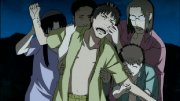

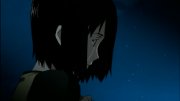






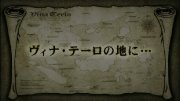

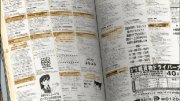

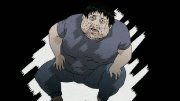


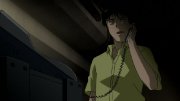

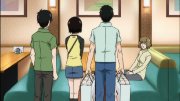


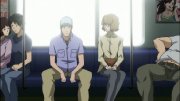

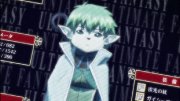
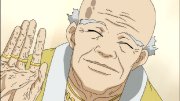






































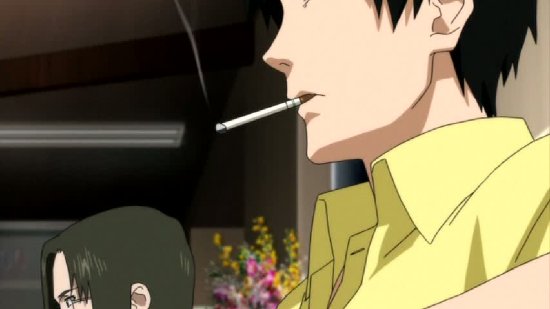







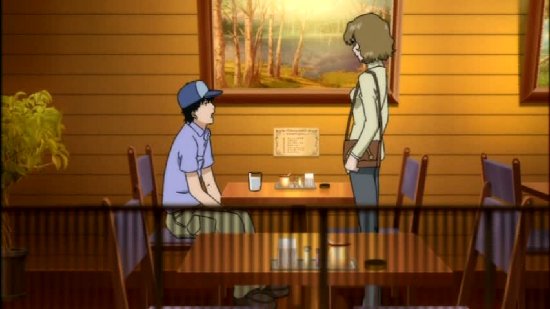
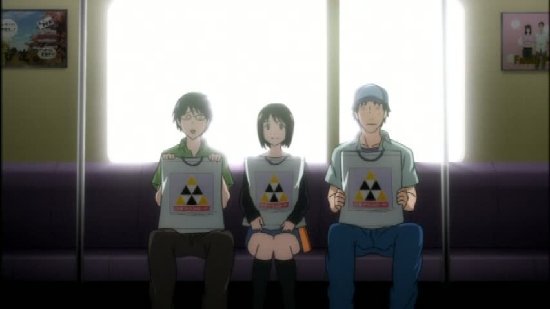
Your Opinions and Comments
Be the first to post a comment!